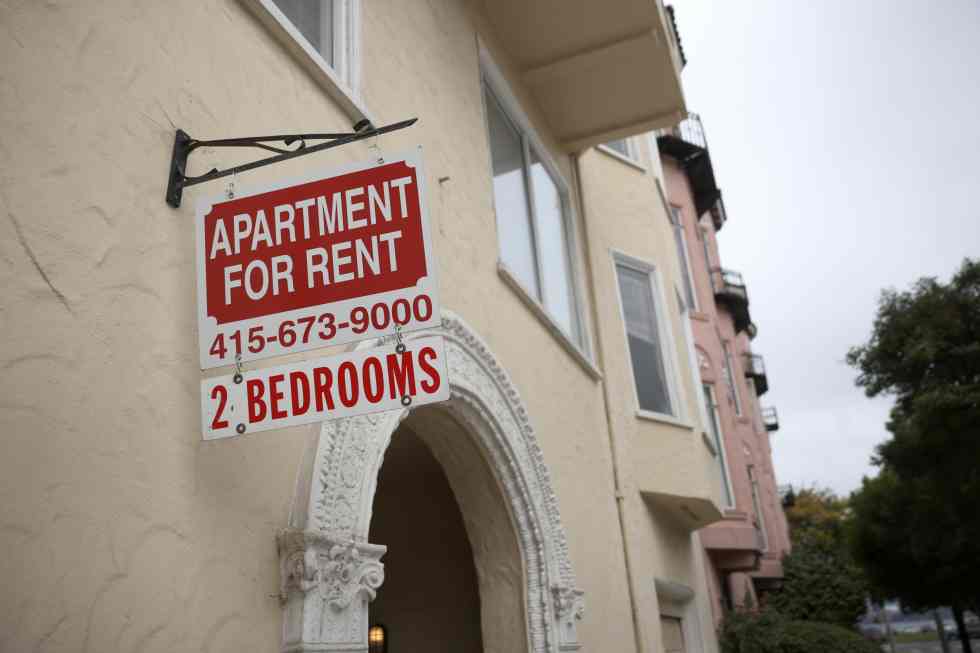Because the economic system begins to bounce again from a pandemic that is lasted over a yr, U.S. residence rents are predicted to rise 2.5 p.c this yr.
Freddie Mac predicted the expansion primarily based on the idea the economic system progress continues by the remainder of this yr and into 2022.
Rents have been rising based on different figures, together with these from Zillow. The corporate tracks a lot of rental properties, together with ones owned by particular person buyers. Zillow’s hire index rose 7.1 p.c yr over yr in June, the most important annual improve on report going again to 2015.
The bounce again is welcome to residence house owners after thousands and thousands of People had been unable to pay hire through the pandemic on account of layoffs and diminished funds.
For extra reporting from the Related Press, see beneath.
Rents are rising, buoyed by robust demand as U.S. residence costs push to new highs, leaving many would-be consumers no alternative however to hire. Not less than one measure of hire collections reveals fewer tenants are failing to maintain up with funds than just some months in the past. And whereas vacancies have not fallen again to pre-pandemic ranges, they’re principally in step with the 10-year common.
The traits signify a shift from earlier this yr, when rents weren’t rising and vacancies stored rising. That modified within the spring when pandemic-related restrictions had been loosened following a ramped-up distribution of coronavirus vaccines. Since then, an enhancing economic system and job market have helped stoke demand for rental housing.
“The tide has actually turned fairly a bit for [apartment] leases due to these components,” mentioned Victor Calanog, chief economist at Moody’s Analytics REIS.
The nationwide common efficient hire, a key trade measure, elevated by 0.6 p.c within the second quarter, based on knowledge from Moody’s Analytics REIS, which tracks house owners of communities with at the very least 50 flats. The April-June improve snapped a string of 4 straight quarterly declines, lifting the common U.S. efficient hire to $1,394.79. It was additionally the most important for the reason that third quarter of 2019. Efficient hire is what’s left after taking out concessions provided generally by landlords to woo tenants.
With demand selecting up, landlords are feeling much less strain to supply tenants incentives similar to a free month’s hire, Calanog mentioned.
“You could possibly have gotten that six months in the past, however no extra,” he mentioned.
In one other signal of enhancing traits for residence house owners, fewer tenants have been failing to pay their hire than just some months in the past, based on knowledge from the Nationwide Multifamily Housing Council, an residence trade group.
The info, which is drawn from hire funds on greater than 11 million flats, present that the share of flats the place hire was paid by months’ finish inched as much as 95.6 p.c in June after falling the 2 earlier months. In June final yr, the hire assortment charge was 95.9 p.c, then fell steadily till it hit a pandemic-low 93.2 p.c in January.
One metric that hasn’t improved is the nationwide emptiness charge for flats. It stayed at 5.3 p.c this yr, based on Moody’s Analytics REIS. In 2020, it went from 4.8 p.c within the first quarter to five.2 p.c within the fourth quarter.
Efforts by federal, state and native authorities to assist renters who would in any other case be evicted for lacking hire funds have doubtless helped maintain emptiness charges from climbing larger.
A federal moratorium on evictions expired on the finish of July, setting the stage for mass evictions at a time when an ultra-contagious mutation of the COVID-19 virus is spreading throughout the U.S. However late Tuesday, the Facilities for Illness Management and Prevention issued a brand new ban on evictions by October 3 in counties with excessive ranges of coronavirus transmissions.
“You’ll be able to’t rule out the very actual risk that vacancies have been steady due to eviction moratoria,” Calanog mentioned. “Is it the faux sort of steady?”
Latest earnings stories from a number of actual property funding trusts, or REITs, that personal residence communities mirror the rental market’s stable demand traits.
Mid-America Condominium Communities, which owns greater than 100,000 flats throughout 16 states, elevated its earnings outlook for the yr after reporting better-than-expected outcomes final week, thanks largely to robust demand. The corporate mentioned new and lease renewal rents at flats in communities open at the very least a yr jumped 12 p.c final month from a yr earlier.
Three of the opposite largest residence REITs—AvalonBay, Fairness Residential and UDR—have additionally not too long ago reported quarterly outcomes that topped Wall Avenue’s forecasts.
In a analysis notice final week, analysts at Mizuho Securities mentioned the residence sector stays a “must-own.” Mizuho has “Purchase” scores on AvalonBay and UDR.











Leave a Reply